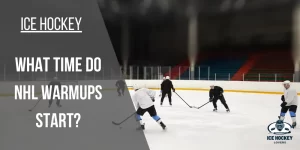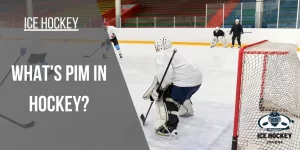Hockey Hooking: What is a Hooking Penalty in Hockey?
Are you curious about the intriguing technique known as “Hockey Hooking”? This skillful maneuver has captivated hockey enthusiasts and players with its strategic prowess.
In this article, we will delve deep into the concept of hooking, discussing its definition, penalties, and consequences. Whether you’re a player, coach, or fan, understanding hooking is crucial for a fair and exciting game. So let’s get started!
Table of Contents
What is Hockey Hooking?
Hooking is a penalty in ice hockey that occurs when a player uses their stick to impede the progress of an opponent by hooking or tugging at them. The hooking involves placing the blade of the stick to prevent the opposing player from moving freely or interfering with their ability to handle the puck.
The Hooking Penalty
The referees will assess a hooking penalty when a player is caught hooking. This penalty is typically minor, resulting in the player being sent to the penalty box for two minutes. However, a major or double minor penalty may be assessed in more severe cases, leading to the player serving four or five minutes in the penalty box, respectively.
Consequences of Hooking
Hooking penalties can have significant consequences for the penalized player and their team. When a player is in the penalty box, their team is short-handed, resulting in a disadvantage known as a power play for the opposing team. During a power play, the opposing team has more players on the ice, increasing their scoring chances and disadvantaging the penalized team.
Moreover, repeated hooking infractions by a player can result in additional penalties, such as a misconduct penalty or even a game misconduct penalty, which leads to ejection from the game. These escalating penalties serve as a deterrent to prevent players from engaging in hooking and other forms of rule infractions.
Video Example of Hooking in Hockey
The above video clip clearly demonstrates a hooking infraction during an ice hockey game. In the scene, a Canadian player wearing a white jersey with the number 65 engages in a battle with a Ducks player in a black jersey with the number 45, both vying for position in front of the net. As the shot is taken, it ricochets off the goalie and into the corner.
While both players skate towards the puck, it becomes evident that the Canadian player’s stick becomes entangled around the midsection of the Ducks player. As a result, not only does this action impede the Ducks player’s progress, but it also causes him to lose balance and fall, enabling another Canadian player to gain possession of the puck. Subsequently, the referee penalizes the Canadian player for hooking.
Conclusion
In conclusion, hockey hooking is a prominent technique that has become an integral part of the game. Its history, application, and strategic advantages make it a valuable skill for hockey players at all levels. By understanding the fundamentals and practicing the proper execution, players can leverage the power of hockey hooking to gain an advantage on the ice. Whether disrupting opponents’ plays, creating scoring opportunities, or maintaining defensive control, mastering this technique can elevate your game. So, lace up your skates, grab your stick, and embrace the art of hockey hooking as you embark on an exciting journey of skill, strategy, and success.

Who is Austin Taylor?
Meet Austin Taylor, your go-to source for everything ice hockey! With a passion for the sport that’s as deep as the ice itself, Austin Taylor brings you concise, expert insights and nitty-gritty details on all things hockey. From gear reviews to strategy breakdowns, Austin Taylor is your trusted guide to navigating the exhilarating world of ice hockey. Get ready to lace up your skates and dive into the game with Austin Taylor as your ultimate companion.





